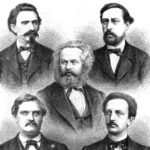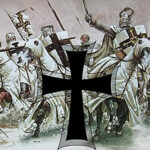German society is highly organized into associations that represent the occupational, socioeconomic, religious, and recreational interests of individuals–a tradition that dates back to the corporate guild system of the Middle Ages. Most Germans belong to at least one voluntary association, and many belong to several. The vast majority of these organizations (such as sports clubs) have little political significance, but an important core of groups combines a strong organizational base with a particular interest in policy issues. The size of these interest groups varies. Smaller groups represent subsectors of the population, such as farmers. The large associations include trade unions, professional associations, and religious groups. More than 1,000 of these interest groups are registered formally as lobbyists with the federal government, and hundreds more are active at the Land level.
The primary interest associations in Germany are organized differently from interest groups in the United States. The United States offers a pluralist model of interest groups, in which loosely structured factions compete within the policy process to represent the same social interests. The government offers a neutral forum in which these groups vie for influence on policy. In contrast, many of the major interest associations in Germany reflect a neocorporatist model of interest articulation that channels interests into a number of unified, noncompetitive associations.
Four large, national “peak” associations (Spitzenverbaende; sing., Spitzenverband) represent groups of similar interest associations as a whole. The labor unions, business, the churches, and the agricultural lobbying organizations each has its own Spitzenverband. Membership in one of these peak associations is often mandatory for individuals in a given social or occupational sector. Most peak associations are also organized hierarchically, with the national office determining the objectives and directing the strategy of the association as a whole.
The influence of the interest associations is institutionalized in several ways. Political parties provide one major channel of influence. Although the associations eschew formal party ties and claim to remain above partisan politics–for instance, they do not officially endorse a party at election time–ties between these associations and the parties are close. To take one example, the labor unions maintain a highly developed relationship with the Social Democrats, and a large percentage of SPD party activists are union members. Another forum for interest group activity is the Bundestag. The interest associations not only monitor legislation, lobby members, and testify at hearings, but they also maintain formal affiliations with deputies. Since 1972, when the Bundestag first started keeping records, roughly 50 percent of the members reported either being employed by an interest group or holding an executive position in a group. About 25 percent of the members are affiliated with economic groups, such as labor unions or the business lobby, and about 17 percent are affiliated with religious or cultural associations. Members of key committees such as agriculture, labor, and education are particularly likely to have ties to the relevant groups. The government ministries themselves provide yet another means by which interest groups influence the policy process. The neocorporatist system encourages formal ties between the two. For instance, ministries are required by law to consult with the peak associations about draft legislation that would affect them. To fulfill this obligation, the federal ministries have established standing advisory committees, which include representatives of the relevant interest groups.
Related Political Forces in Germany:
Business and Industry
Labour Unions
The Churches
Citizens’ Initiative Associations
Related articles:
German Government and Politics
The Chancellor of Germany
The President in Germany
The Legislature in German Politics
Bundestag
Bundesrat of Germany
Electoral System of Germany
German Political Parties
German Flag







